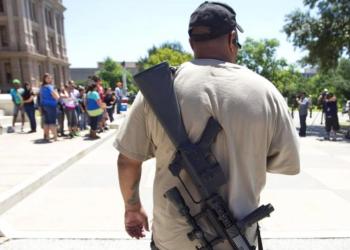In a lengthy (127-page) split (7-to-4) opinion, an en banc (11 justice) panel of the Ninth Circuit Court of Appeals reversed its earlier three-judge opinion (at 896 F.3rd 1044 [9th Cir. July 24, 2018]; see California Legal Update, Vol. 23 #9, July 29, 2018.) and upheld the constitutionality of a Hawaii “open carry” statute (Hawai’i Revised Statutes § 134-9(a)). (Young v. Hawaii (9th Cir. Mar. 24, 2021) __ F.3rd __ [2021 U.S.App. LEXIS 8571].) The statute in issue requires its residents seeking a license to “openly carry” firearms in public to meet certain requirements. Specifically, an applicant for such a permit must (1) demonstrate “the urgency or the need” to carry a firearm, (2) be of good moral character, and (3) be “engaged in the protection of life and property.” In this case, appellant George Young had applied for a firearm open-carry license relying simply upon his general desire to carry a firearm for self-defense. The state denied his application, telling him that he had failed to show an “urgency or . . . need.” Filing suit in federal court, and arguing that Hawaii’s statute violated the Second Amendment (as well as the Fourteenth Amendment’s due process clause; an argument the Court rejected as “premature” and not currently in issue), the district court disagreed with Young and upheld the constitutionality of the statute; a decision that was affirmed here. This case follows the Ninth Circuit’s earlier en banc decision of Peruta v. County of San Diego (9th Cir 2016) 824 F.3rd 919, where it was held that the Second Amendment does not protect one’s right to carry a concealed firearm (a felony under California law, per P.C. § 25400.). California also has an “open carry” statute, of sorts, making it a felony to carry “a loaded firearm on the person or in a vehicle “while in any public place or on any public street in an incorporated city or . . . in a prohibited area of an unincorporated territory,” whether done so openly or not. (See P.C. § 25850(a), noting that this section is limited to “loaded” firearms, and does not make illegal the open carrying of firearms in any non-incorporated, non-prohibited, rural areas.) This new case out of Hawaii can be argued as authority for upholding the constitutionality of section 25850, supporting prior California case law to that effect. (See People v. Villa (2009) 178 Cal.App.4th 443; and People v. Flores (2008) 169 Cal.App.4th 568.) So if you’re a Second Amendment advocate, and think you should be able to openly carry a firearm anywhere you want, you’re on the losing end of this debate. (See also District of Columbia v. Heller (2008) 554 U.S. 570, and McDonald v. City of Chicago (2010) 561 U.S. 742, for the U.S. Supreme Court’s discussions on your Second Amendment rights and its limitations.) But the issue raised in this new decision is certainly ripe for appeal to the U.S. Supreme Court where a more conservative Court (at least until President Biden “packs” it with more liberal justices) might just turn this all on its head. So stay tuned. We haven’t heard the last of this argument yet.

